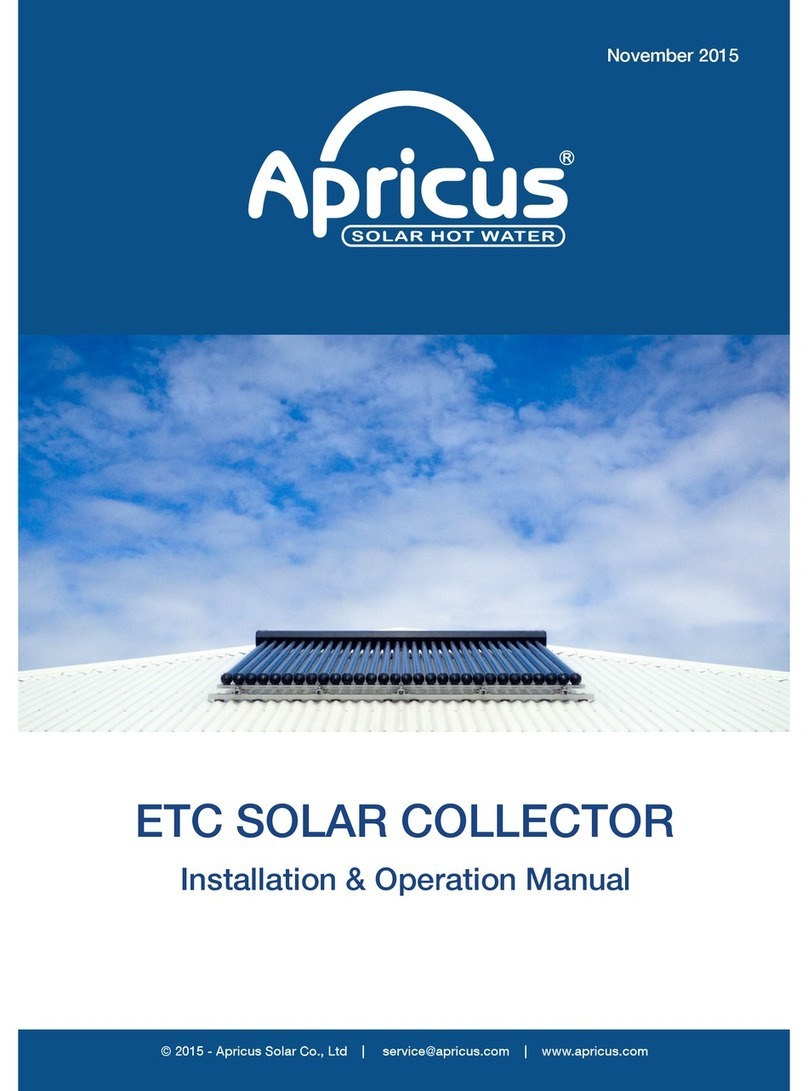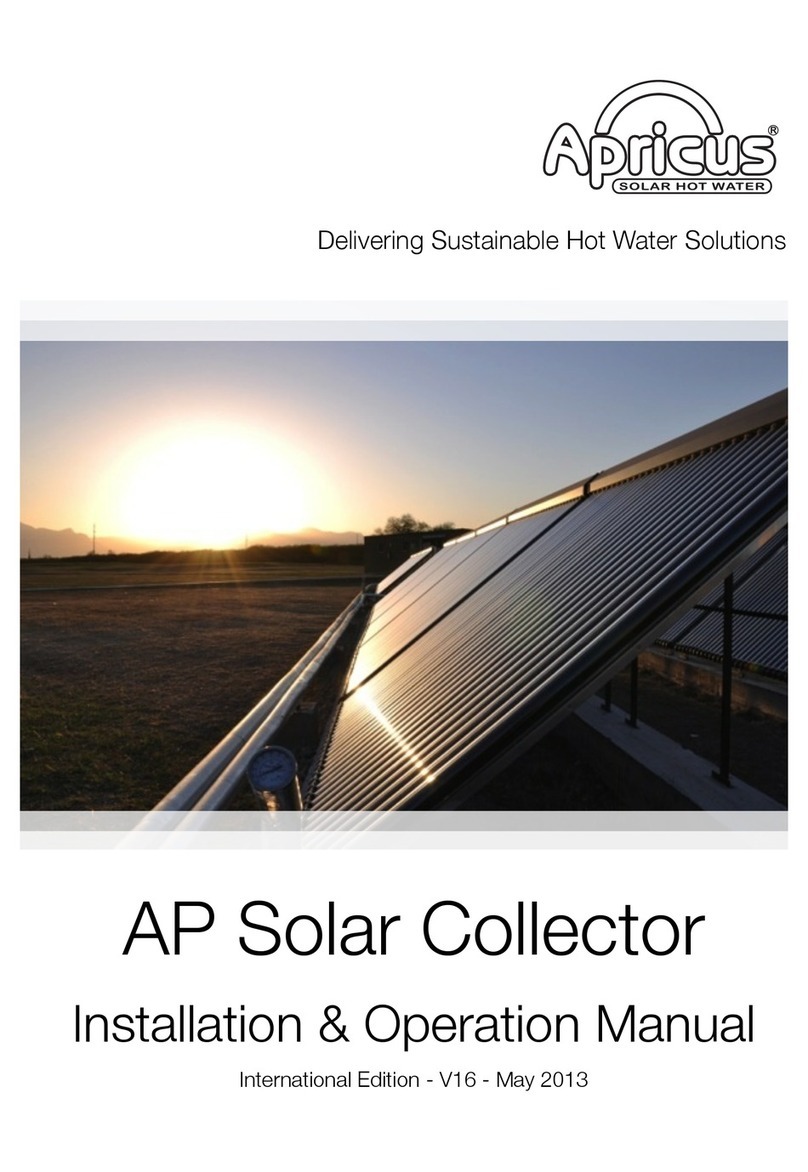
Contents
................................................................................................1. Important Information!3
...........................................................................................................................................1.1. Scope of Manual!3
............................................................................................................................................1.2. Local Standards!3
.....................................................................................................................................1.3. Authorized Person(s)!3
...................................................................................................................1.4. Collector Dimensions & Weights!3
.........................................................................................2. Unpacking and Inspection!4
.............................................................................................................................................2.1. Component List!4
......................................................................................................................................................2.2. Inspection!4
............................................................................................................................................................2.3. Frame!4
............................................................................................................3. System Design!4
..............................................................................................................................................3.1. System Design!4
..................................................................................................................................................3.2. Avoid Shade!4
...........................................................................................................................................3.3. Installation Angle!4
.............................................................................................................................3.4. Collector Horizontal Slope!4
..........................................................................................................................3.5. Collector and Tank Location!5
.........................................................................................................................................3.6. Collector Direction!5
......................................................................................................................................3.7. Heat Transfer Fluids!5
...................................................................................................................................3.8. Correct System Sizing!6
.........................................................................................................................3.9. Stagnation and Overheating!6
............................................................................................3.10. Pressure and Temperature Control and Relief!6
.........................................................................................................................................3.11. Freeze protection!6
..............................................................................................................................................3.12. Wind Loading!7
..................................................................................................................................................3.13. Snow Load!7
...........................................................................................................................................3.14. Hail Resistance!7
......................................................................................................................................................3.15. Lightning!7
.....................................................................................................4. Collector Mounting!8
..............................................................................................................................................4.1. Frame Material!8
.............................................................................................................................................4.2. Roof Clearance!8
.........................................................................................................................................4.3. Galvanic Reaction!8
......................................................................................................................................4.4. Installation Planning!8
.............................................................................................................................4.5. Frame Assembly Process!8
.............................................................................................................................4.6. Roof Attachment Strength!8
.........................................................................................................................................4.7. Roof Penetrations!9
........................................................................................................................................4.8. Collector Mounting!9
...................................................................................................................4.9. Frame Components Diagrams!10
.......................................................................................................................4.10. Frame Component Details!12
.................................................................................................................................4.11. Angled Frame Guide!14
............................................................................................................................................4.12. Wall Mounting!15
.......................................................................................5. Piping & Collector Layout!16
....................................................................................................................................................5.1. Flow Rate!16
.....................................................................................................................................................5.1. Pipe Size!16
........................................................................................................................5.2. Single Collector Connection!16
...............................................................................................................5.3. Connection of Multiple Collectors!17
.............................................................................................................................................5.4. Pipe Insulation!17
.....................................................................................................................................................5.5. Air Purge!17
...........................................................................................................................................5.6. Pump Selection!18
..............................................................................................................5.7. Pressure Drop Graphs (FPC-A32)!18
.........................................................................................................6. System Control!19
.....................................................................................................................................................6.1. Controller!19
.........................................................................................................................6.2. Temperature Measurement!19
.............................................................................................................................6.3. Solar Controller Settings!19
..............................................................................................................7. Maintenance!19
......................................................................................................................................................7.1. Cleaning!20
......................................................................................................................................7.2. Other Components!20
.....................................................................................................................................................7.3. Insulation!20
.....................................................................................................................................7.4. Broken Glass Cover!20
..................................................................................................................................7.5. Draining the Collector!20
......................................................................................................................................7.6. Other Components!20
........................................................................................................8. Troubleshooting!21
..................................................................................................................9. Disclaimer!22
..........................................................................10. Manufacturer’s Limited Warranty!23
.......................................................................................11. Installation Record Form!24
Apricus FPC-A Flat Plate Solar Collector Installation and Operation Manual
Copyright © 2013 – Apricus Solar Co., Ltd A11.02.1.1-PB-V4 Page 2 of 24






























